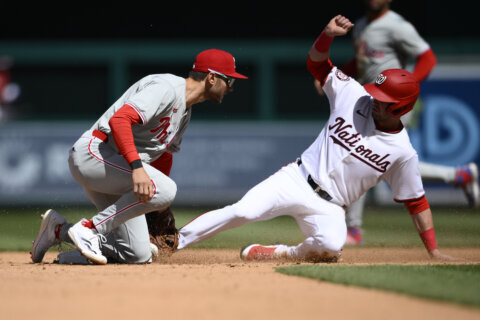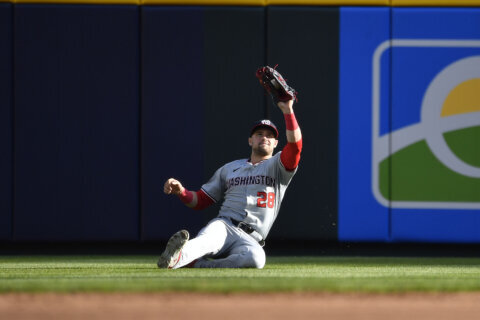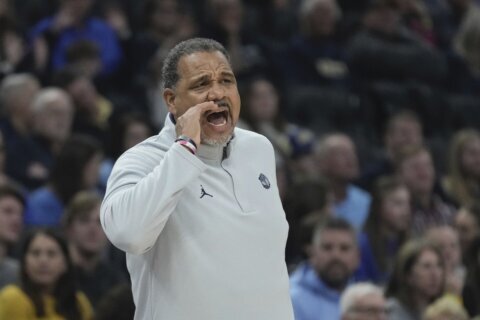WASHINGTON – Now that the dust has settled on what turned out to be the most active Major League trade deadline in 21 years, how has the potential postseason landscape changed? And what did the way each team acted under pressure say about its organizational philosophy as a whole?
As the only major American sport without a salary cap, baseball gives us the widest variance in management styles. But the differences in strategy go beyond simple matters of payroll. That’s why the Nationals–despite sporting a top 10 payroll in the league–actually stayed true to their ethos despite not spending heavily either monetarily or in prospects for a top echelon relief pitcher. Instead, they traded lesser talent to the Pirates for Mark Melancon.
ESPN’s Buster Olney, not usually one to indulge in hyperbole, said he “thought the Nats did a terrible job” by insisting on not trading one of their top pitching prospects to land an overpowering arm like Aroldis Chapman or Andrew Miller.
That seems excessive, considering they still landed a quality addition to their bullpen in Melancon, in keeping with the organizational philosophy that general manager Mike Rizzo has always preached –- trying to win today while keeping an eye on the future.
The insistence against trading Lucas Giolito, or any other top prospect, may frustrate fans yearning for the best chance at a title this year, but it is consistent with last year’s mid-season move to acquire Jonathan Papelbon rather than one of the bigger names on the market. And Washington’s decision-making wasn’t the only one that indicated the larger organizational direction.
A year after landing Cole Hamels at the deadline, the Rangers were the beneficiaries of Jonathan Lucroy exercising his no trade clause to opt out of going to Cleveland. And just like last year, the Rangers weren’t afraid to part with top minor league talent to address their biggest need with the best player available. With Adrian Beltre in the limelight of his career, Texas has done what it needs to do immediately to improve a team with legitimate title hopes.
Similarly, the Cubs have seen their window open and have been particularly aggressive in addressing weaknesses, no matter the prospect cost.
Last year’s acquisitions of Tommy Hunter and Dan Haren paled in comparison to Aroldis Chapman this year, but the thought process was the same. The lineup is set on the north side of Chicago, and the biggest room for improvement was at the back end of the bullpen.
While they couldn’t get Lucroy to replace the injured Yan Gomes, Andrew Miller makes a ton of sense for an Indians team with excellent starting pitching, a solid core lineup and a limited payroll.
Miller’s team-friendly contract ($9 million each of the next two seasons after 2016) made him that much more expensive in terms of prospects, but with good reason.
While both Melancon and Chapman will be free agents this winter, Miller gives Cleveland two and a half seasons of established, high quality relief at a well-below market rate.
For a small-market team with a low enough payroll that Miller becomes their highest-paid player this season, the move fits right in.
The Giants are almost always buyers near the deadline, and recently their focus has been on pitching, but never the type of top arm (see: Johnny Cueto last year, or Chris Sale this year) that may be on the market.
They acquired Jake Peavy in 2014 and Mike Leake in 2015, each to help fill out the middle of their rotation. While Matt Moore may still have a high potential ceiling, he fits the same mold.
On the other hand, just like last year, the Mets desperately needed an offensive boost, especially with Lucas Duda potentially missing the rest of the season. And while they could hardly expect the kind of boost Yoenis Cespedes provided them from Jay Bruce, he provides some much needed pop in the lineup.
And while Jon Niese (and earlier reacquisition Kelly Johnson) may not move the fan needle much, he provides a trusted, familiar face with whom the organization is familiar.
A fan could take issue with any one of these approaches — the Cubs and Indians possibly giving up too large a prospect haul for a relief pitcher, the Giants or Nationals settling for lesser-regarded options.
But none of them should have come as particular surprises to anyone who really follows any of these clubs. They each have their own opinions about the best way to win.
We’ll see which ones get vindicated at the end of September, and again at the end of October.







